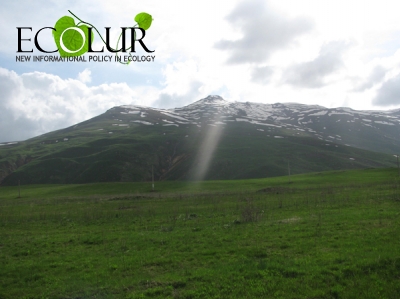

Arthur Grigoryan - Activist of “Teghout Support” civic initiative, Lawyer
CHAPTER TWO
Let’s discuss another key legal issue, which refers to determining Amulsar mining impact zone: eventually, which communities are exposed to the negative impact of the project and which are legal obligations of the state and mining company towards community residents?
Article 4 of Law on EIA says that an affected community is the population of that community (communities), which is recognized a project affected community not for the implementation of the project in its administrative area, but for the factual exposure of the community population to the impact of the project. That is, if it’s proved that Amulsar project can impact Lake Sevan ecosystem or can lead to the shift in the living environment of Jermuk town, the communities adjacent to the lake and Jermuk population shall be involved as project affected communities.
In case of Amulsar project, negative impact can be demonstrated both with the shift in the living conditions (in the form of deterioration of the quality of atmospheric air, soil, water, lighting, noise and other components), harming business activities (Jermuk resort fame, tourism, negative impact on land areas irrigation with rivers under exposure both in qualitative and quantitative manner), deterioration of social condition (human health, resort, negative conditions for housing), and more global demonstrations with the exposure on Lake Sevan (increase in water radiation background, destruction of Vorotan-Arpa tunnel, risk of seismic hazards).
The fact that open pit mining will be implemented in the drainage basin of Lake Sevan is already an undeniable legal ground to consider the possible impact on Lake Sevan substantiated and to recognize at least the communities adjacent to Lake Sevan as project affected communities. We should understand that even possible impact on Vorotan-Arpa Tunnel or, for example, taking water from Arpa River for development purposes is already impact on Lake Sevan. The mining company tried to avoid the issue of impact on Lake Sevan in its EIA, which is not a solution to the problem, but makes the lawfulness and professional substantiation of the state body having issue environmental expertise opinion to the EIA of the company more vulnerable.
Because of the geographical location of Amulsar, the negative impact of the mine will spread over a larger area. It’s the Nature Protection Ministry, which decides whether the communities are project affected or not.
Still in 2012 Jermuk resident Victoria Grigoryan applied to Nature Protection Ministry asking to recognize the community as a project affected one and to make community residents participants in the public hearings in Amulsar project. Sevan Town resident Anna Shahnazaryan also posed the same demand to the minister, but they were both rejected.
In December 2014 the representatives of 18 NGOs representing communities in Lake Sevan basin filed an application to the financial institutions having shares in Amulsar project (World Bank – International Finance Corporation (IFC) and European Bank for Reconstruction and Development (EBRD)) requesting them to demand from the mining company to withdraw its project and to make 40 littoral communities in Lake Sevan participants in the process. The letter has been formulated in a proper manner making references to the IFC Performance Standards the company must comply with.
The same standards say the project can’t be implemented, if it contradicts to the domestic legislation. In my next article I will speak about contradictions to legislation.
March 26, 2015 at 17:27
